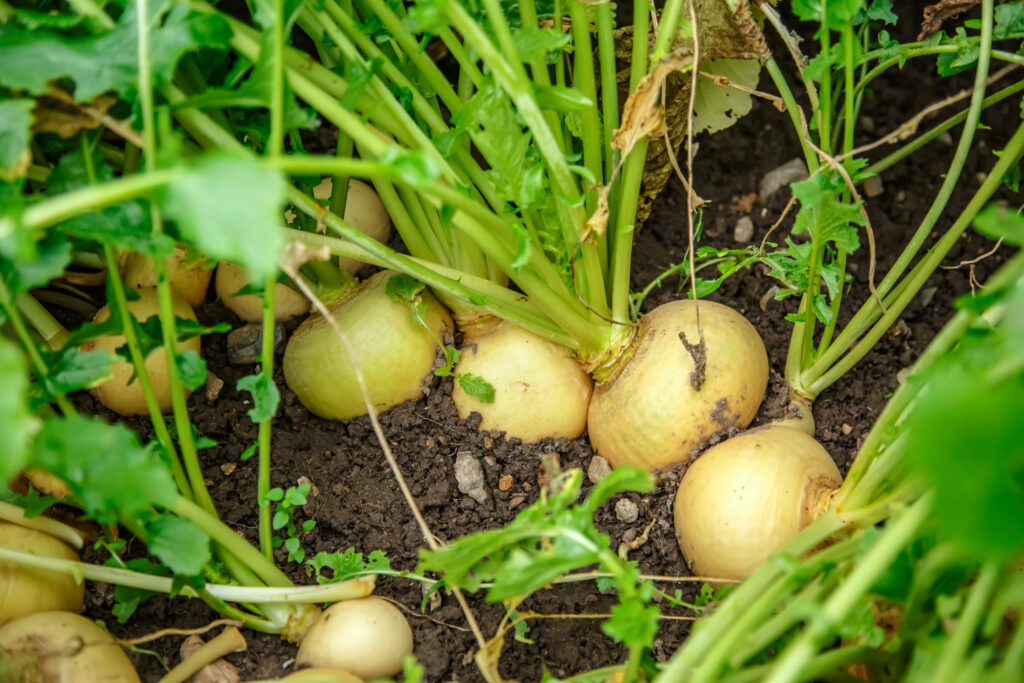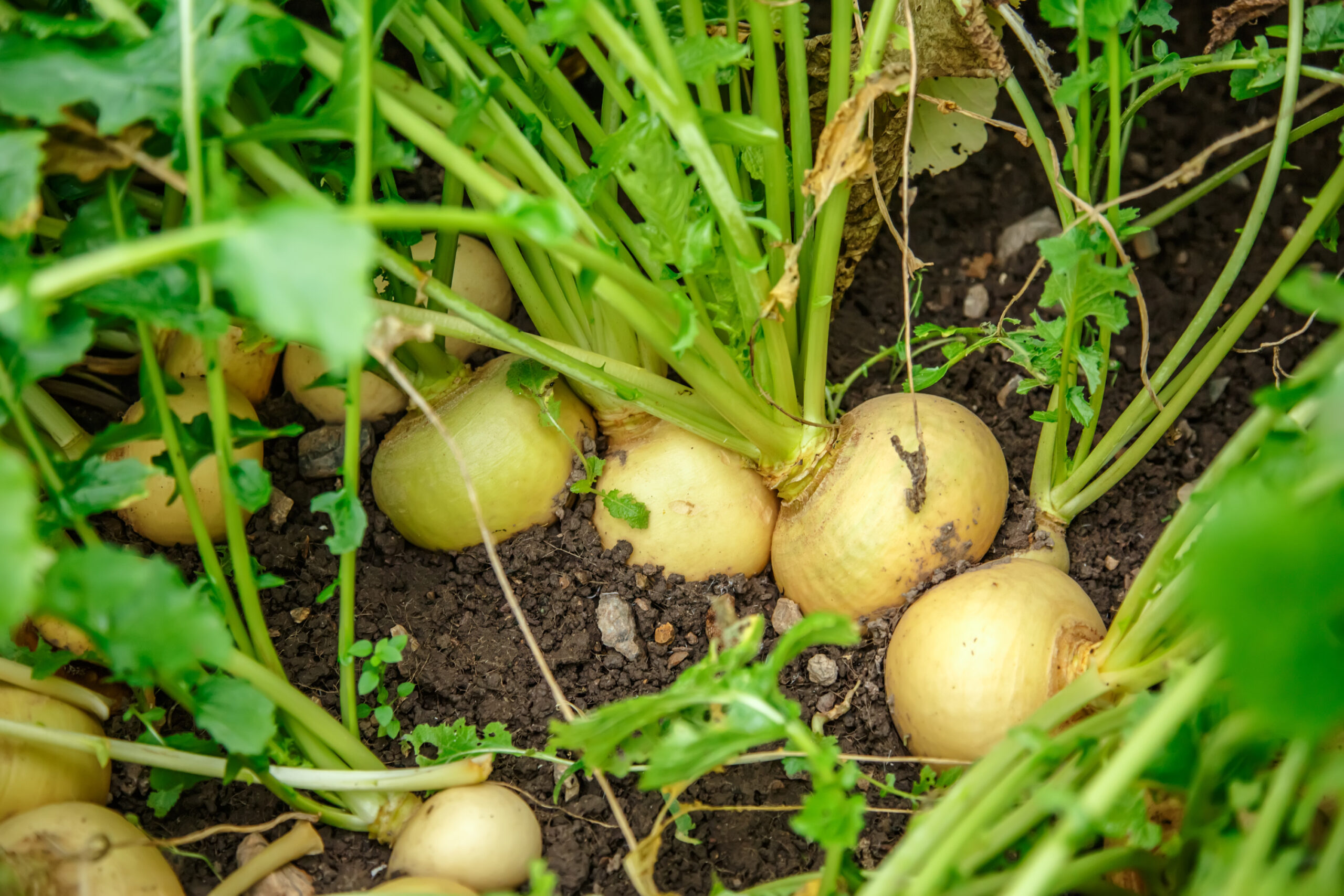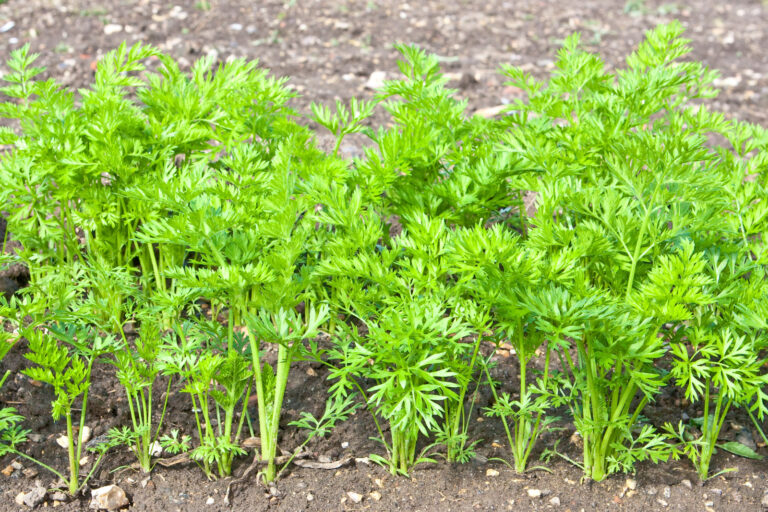Succession Planting Turnips for a Continuous Harvest
Turnips mature quickly—usually within 40 to 60 days—making them perfect for staggered planting. Continuous sowing extends the harvest, reduces waste, and adapts to changing garden conditions.

How to Succession Plant Turnips
- Choose Fast-Maturing Varieties
Select varieties like ‘Purple Top White Globe’ or ‘Tokyo Cross’ known for reliable, quick growth. - Start Early
Begin sowing 4–6 weeks before your last spring frost for a steady spring harvest. - Sow Every 2–3 Weeks
Plant seeds in intervals of 2–3 weeks throughout the spring and summer to maintain a constant supply. - Switch to Fall Planting
In late summer, continue sowing for a fall harvest, which often produces sweeter roots due to cooler weather. - Prepare Soil Between Plantings
Amend soil with compost and loosen the bed to support healthy root growth.
My Experience
After decades of gardening, I’ve found that succession planting turnips is the easiest way to keep fresh, tender roots and greens available from early spring well into fall.
Turnip Succession Planting Schedule by USDA Zone
| USDA Zone | Start Spring Sowing | Interval Between Sows | Last Fall Sowing |
|---|---|---|---|
| 3–5 | Mid-April | Every 2–3 weeks | Late July |
| 6–7 | Early March | Every 2 weeks | Early September |
| 8–9 | Late February | Every 2 weeks | Mid-September |
| 10+ | Year-round (avoid hot months) | Every 2 weeks | Year-round (avoid heat) |
How to Use This Schedule:
- Start Early: Begin sowing according to your zone’s first planting window.
- Keep Planting: Sow a new batch every 2 to 3 weeks to replace harvested turnips.
- Transition to Fall: As temperatures cool, continue sowing for sweeter fall roots.
- Soil Care: Between sowings, amend soil with compost and loosen for root development.
Turnip Growing Hub
🥗 Start here: The Ultimate Turnip Growing Guide: From Seed to Harvest
🌱 Planting & Timing
- When to Plant Turnips for Spring, Fall, and Winter Harvests
– Answers “when do I plant turnips?” with zone-based timing. - Turnip Seed Starting Tips
- Succession Planting Turnips for a Continuous Harvest
– Explains timing and spacing strategies to keep the harvest going. - How to Grow Turnips in Containers and Raised Beds
– Great for small-space and urban gardeners. Include container size and spacing details. - How to Space and Thin Turnips for Full Roots
– Many gardeners fail to thin properly. This solves a common issue.
🌿 Care & Maintenance
- How Much Water Do Turnips Need? A Watering Guide
– Helps answer “why are my turnips woody or bitter?” - How to Fertilize Turnips for Tender Roots and Tasty Greens
– A common struggle: too much leaf growth, small roots. - Best Companion Plants for Turnips (And What to Avoid)
– Evergreen content with strong search and Pinterest appeal. - How to Grow Turnips in Hot Weather or Warm Climates
– Address bolting, bitterness, and timing challenges in Zones 8–10.
🐛 Pests, Diseases & Troubleshooting
–Flea beetles, aphids, damping off, white rust Includes IPM methods
- Why Are My Turnips All Tops and No Roots? What Went Wrong
– Diagnostic article that answers a frequently asked gardener problem. - How to Prevent Woody Turnips and Improve Texture and Flavor
– Addresses late harvest, heat, and drought issues.
🧺 Harvest, Storage & Kitchen Use
- How and When to Harvest Turnips for Best Texture
– Cover baby turnips, mature roots, and leafy greens. - How to Harvest and Store Turnips
– Answers “how long do turnips last?” and “can you store turnips in sand?” - Freezing and Preserving Turnips: A Beginner’s Guide
– Popular in late fall/early winter, great for preserving guides. - Eight Ways to Cook and Serve Turnips: Roots, Greens, and Recipe Ideas
– Kitchen-friendly post that links to growing and harvesting. - How to Use Turnip Greens in the Kitchen
– Zero-waste kitchen content that connects gardeners and cooks.
🌾 Varieties & Seed Saving
- Best Turnip Varieties for Flavor, Size, and Growing Time
– Compare fast-maturing, heirloom, and dual-purpose types. - Turnip Varieties for Mild Climates and Short Seasons
– Useful for Zones 8–10 and gardeners with short falls.







